Can Women Fly Planes In The Air Force? Absolutely yes, women can fly planes in the Air Force, and flyermedia.net is your go-to resource for comprehensive insights into this exciting field. The integration of women into military aviation has a rich history marked by breaking barriers and demonstrating exceptional skill. Ready to explore the opportunities and inspiring stories?
1. What Is The History Of Women Flying Planes In The Air Force?
The history of women flying planes in the Air Force is a narrative of perseverance, breaking barriers, and achieving milestones. Although women were initially excluded from combat roles, their contributions during World War II as Women Airforce Service Pilots (WASP) paved the way for future generations.
During World War II, the Women Airforce Service Pilots (WASP) played a crucial role, flying non-combat missions to free up male pilots for combat duties. Despite facing significant societal barriers, these women demonstrated their flying skills and commitment to serving their country. According to research from the Air Force Historical Research Agency, WASP pilots flew over 60 million miles and delivered over 12,000 aircraft during the war.
The Women’s Armed Services Integration Act of 1948 allowed women to serve in the military but included a “combat exclusion law” that restricted women from combat roles. This law significantly impacted women’s opportunities in aviation, limiting their roles and career advancement.
In 1976, the Air Force initiated a test program for women pilots, marking a pivotal moment. This program allowed women to enter pilot training and demonstrate their capabilities in flying military aircraft. Following this, military academies began accepting women cadets in 1977, further integrating women into the armed forces.
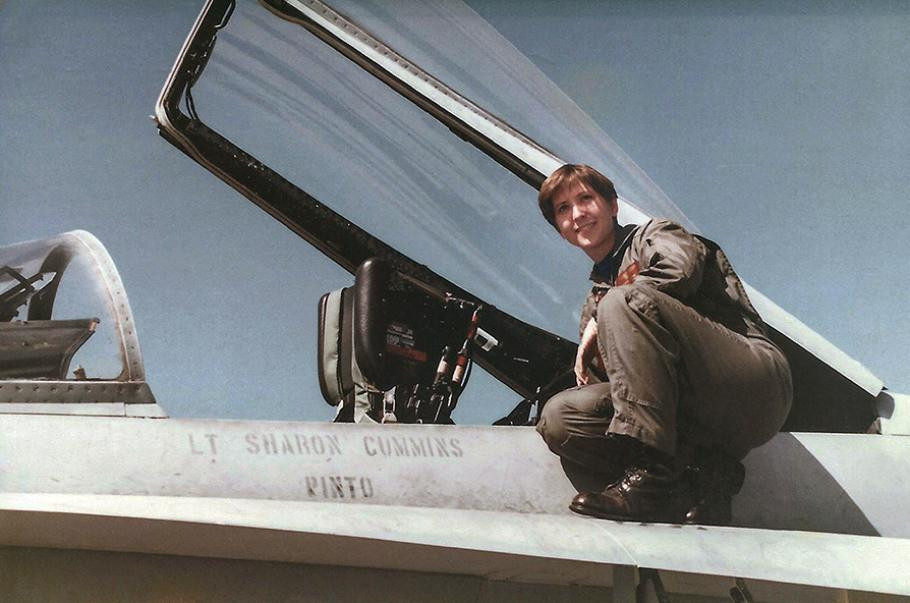 A young woman wearing a U.S. Navy olive-green flightsuit and black combat boots perches next to the cockpit of her F/A-18C miltary jet.
A young woman wearing a U.S. Navy olive-green flightsuit and black combat boots perches next to the cockpit of her F/A-18C miltary jet.
The combat exclusion policy faced increasing scrutiny, particularly after the Gulf War in 1991, where 41,000 women served, including in aviation roles. Women flew transport aircraft, helicopters, and electronic warfare planes, often in hazardous conditions. Secretary of Defense Richard Cheney acknowledged that the U.S. “could not have won without them,” highlighting their essential contributions.
In April 1993, Secretary of Defense Les Aspin ordered the removal of the combat exclusion policy, allowing women to fly combat missions. The Air Force quickly followed suit, announcing that women could serve as combat pilots. This decision opened new career paths and opportunities for women in aviation.
In 1994, Lieutenant Kimberly “Face” Dyson became the first American woman to fly a combat mission for the United States. This groundbreaking achievement marked a significant milestone in military aviation history. Colonel Martha McSally became the first woman to fly combat missions for the U.S. Air Force in 1995 during Operation Southern Watch.
The integration of women into the Air Force has led to significant cultural shifts and increased opportunities. Today, women serve in a variety of roles, including fighter pilots, test pilots, and commanders, contributing to the Air Force’s mission with their expertise and dedication.
2. What Are The Requirements For Women To Become Pilots In The Air Force?
To become a pilot in the Air Force, women must meet stringent requirements that assess their physical, mental, and academic capabilities. These requirements ensure that candidates are fully prepared for the challenges of military aviation.
The first step is meeting the Air Force’s eligibility criteria. Applicants must be U.S. citizens, be between 18 and 30 years old, and possess a bachelor’s degree from an accredited institution. According to Air Force regulations, waivers for the age limit may be considered on a case-by-case basis.
A strong academic background is essential. A bachelor’s degree in a STEM field (science, technology, engineering, and mathematics) is highly recommended, as these fields provide a solid foundation for understanding aviation principles and technology. Candidates must also maintain a competitive GPA to demonstrate their academic capabilities.
Passing the Air Force Officer Qualifying Test (AFOQT) is mandatory. This standardized test assesses verbal, quantitative, and aviation knowledge. A high score on the AFOQT significantly improves a candidate’s chances of selection. The AFOQT evaluates skills critical for success in military aviation, including spatial reasoning and instrument comprehension.
Candidates must undergo a comprehensive medical examination to ensure they meet the physical standards required for flying. This includes vision, hearing, cardiovascular health, and overall physical fitness. The Air Force’s medical standards are detailed in Air Force Instruction 48-123, which outlines specific health requirements.
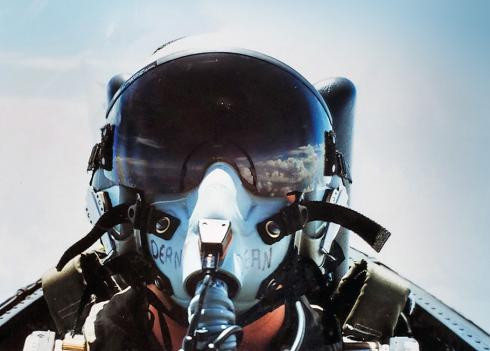 A close-up shot of a pilot sitting in the cockpit of a military jet covered by a clear plexiglas canopy. The pilot is wearing a white helmet with a dark visor and a breathing hose. White clouds are reflected by the visor.
A close-up shot of a pilot sitting in the cockpit of a military jet covered by a clear plexiglas canopy. The pilot is wearing a white helmet with a dark visor and a breathing hose. White clouds are reflected by the visor.
The Air Force requires pilot candidates to meet specific physical fitness standards, including strength, endurance, and agility. Regular exercise and a healthy lifestyle are essential for maintaining the necessary fitness level. Candidates are evaluated on their ability to perform tasks such as push-ups, sit-ups, and running.
Pilot candidates must complete the Air Force’s rigorous pilot training program, which includes classroom instruction, simulator training, and flight training. This program is designed to provide candidates with the skills and knowledge necessary to operate military aircraft safely and effectively.
Candidates are assessed on their leadership potential and character. The Air Force seeks individuals who demonstrate integrity, responsibility, and a commitment to serving their country. Background checks and interviews are conducted to evaluate these qualities.
The selection process for pilot training is highly competitive. The Air Force evaluates candidates based on their AFOQT scores, academic record, medical evaluation, physical fitness, leadership potential, and performance during interviews. Only the most qualified candidates are selected for pilot training.
Upon completion of pilot training, graduates are assigned to specific aircraft based on the needs of the Air Force and the pilot’s aptitude and preferences. Pilots may fly fighter jets, bombers, transport aircraft, or helicopters, depending on their assignment.
3. What Kind Of Training Do Female Air Force Pilots Receive?
Female Air Force pilots receive comprehensive training that equips them with the skills and knowledge necessary to operate advanced military aircraft. This training includes academic instruction, simulator sessions, and extensive flight experience, ensuring they are ready for any mission.
The first phase of training involves academic instruction covering aerodynamics, aircraft systems, meteorology, and navigation. This foundational knowledge is essential for understanding how aircraft operate and how to handle various flight conditions.
Pilot candidates spend many hours in flight simulators, practicing various flight scenarios, emergency procedures, and combat maneuvers. Simulators provide a safe and controlled environment to develop critical decision-making skills and hone their flying techniques.
The core of pilot training is hands-on flight experience. Trainees start with basic flight maneuvers and gradually progress to more complex operations, including formation flying, aerial refueling, and tactical maneuvers. This phase builds confidence and proficiency in the cockpit.
Air Force pilots receive specialized training in specific types of aircraft, such as fighter jets (e.g., F-35, F-16), bombers (e.g., B-2, B-52), or transport aircraft (e.g., C-17, C-130). This specialized training focuses on the unique characteristics and operational requirements of each aircraft.
Pilots also receive survival training, which includes instruction on how to survive in various environments, such as deserts, forests, and open water. This training covers essential skills like navigation, first aid, and self-defense.
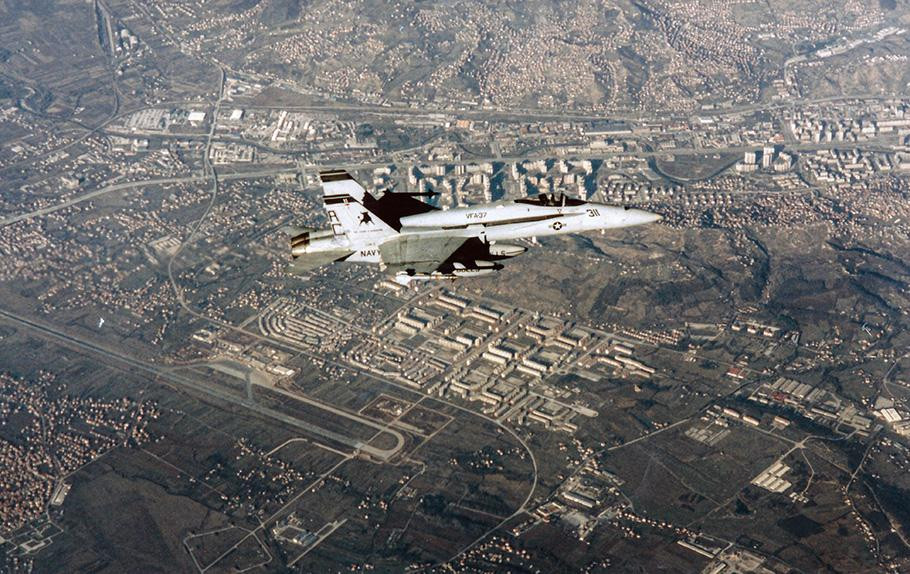 A light gray military jet armed with air-to-air missiles makes a low-altitude pass over a city.
A light gray military jet armed with air-to-air missiles makes a low-altitude pass over a city.
Air Force pilots undergo regular continuation training to maintain and enhance their skills. This includes refresher courses, simulator sessions, and flight evaluations. Continuation training ensures that pilots stay current with the latest techniques and procedures.
Pilots participate in combat training exercises that simulate real-world combat scenarios. These exercises help pilots develop their tactical skills and learn how to work effectively as part of a team. Combat training prepares pilots for the challenges of modern warfare.
Air Force pilots receive training in crew resource management (CRM), which focuses on improving communication, teamwork, and decision-making in the cockpit. CRM training helps pilots work effectively with their crew members to enhance safety and mission effectiveness.
Pilots learn about aviation safety and risk management, including how to identify and mitigate potential hazards. This training emphasizes the importance of following safety procedures and making sound decisions to prevent accidents.
4. What Types Of Aircraft Do Women Fly In The Air Force?
Women in the Air Force fly a wide array of aircraft, showcasing their versatility and skill in various roles. From advanced fighter jets to heavy transport planes, women are integral to the Air Force’s diverse mission set.
Women pilots fly fighter jets like the F-35 Lightning II and F-16 Fighting Falcon. These aircraft are used for air-to-air combat, ground attack, and air defense missions. Women pilots demonstrate their expertise in these high-performance aircraft.
Women also operate bomber aircraft such as the B-2 Spirit and B-52 Stratofortress. These planes are critical for long-range strategic missions and delivering precision strikes. Women pilots play a crucial role in maintaining the Air Force’s strategic capabilities.
Transport aircraft like the C-17 Globemaster III and C-130J Super Hercules are flown by women pilots for transporting troops, equipment, and supplies. These aircraft support humanitarian missions and military operations worldwide.
Women pilots operate tanker aircraft like the KC-46 Pegasus and KC-135 Stratotanker, providing aerial refueling to extend the range and endurance of other aircraft. Aerial refueling is essential for long-duration missions and maintaining air superiority.
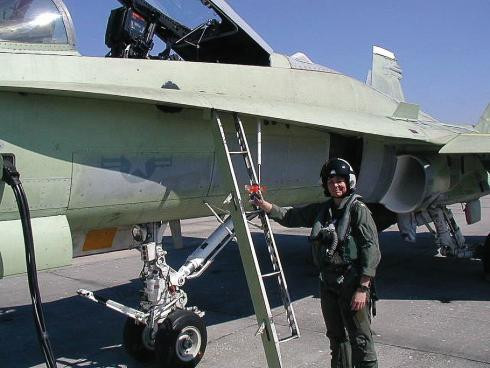 A woman wearing a U.S. Navy flightsuit and helmet stands in front of a ladder leading to the cockpit of a military jet fighter aircraft.
A woman wearing a U.S. Navy flightsuit and helmet stands in front of a ladder leading to the cockpit of a military jet fighter aircraft.
Helicopters such as the HH-60 Pave Hawk are flown by women pilots for search and rescue missions, medical evacuations, and special operations. These aircraft provide critical support in challenging environments.
Women also fly surveillance and reconnaissance aircraft like the RQ-4 Global Hawk and MC-12 Liberty, gathering intelligence and providing situational awareness. These aircraft are essential for monitoring threats and supporting military operations.
Women pilots operate trainer aircraft such as the T-6 Texan II and T-38 Talon, preparing the next generation of Air Force pilots. These aircraft provide foundational flight training and advanced pilot skills.
Women also fly electronic warfare aircraft like the EC-130H Compass Call, disrupting enemy communications and electronic systems. These aircraft play a vital role in electronic warfare operations.
5. What Are Some Of The Challenges Women Face In The Air Force As Pilots?
Despite significant progress, women in the Air Force face unique challenges as pilots, ranging from gender bias to work-life balance issues. Addressing these challenges is essential for creating a more inclusive and equitable environment.
Some women pilots encounter gender bias from colleagues or superiors, which can affect their opportunities for advancement and recognition. Overcoming these biases requires a commitment to diversity and inclusion from leadership.
Balancing the demands of a military career with family responsibilities can be particularly challenging for women pilots, especially those with children. The Air Force is working to provide more support for parents, such as flexible work arrangements and childcare assistance.
The lack of female role models and mentors can make it difficult for young women pilots to navigate their careers. Mentorship programs and networking opportunities can help women connect with experienced pilots and leaders who can provide guidance and support.
Women’s flight gear and equipment are often designed for men, which can affect comfort and performance. The Air Force is working to develop flight gear that is specifically designed for women.
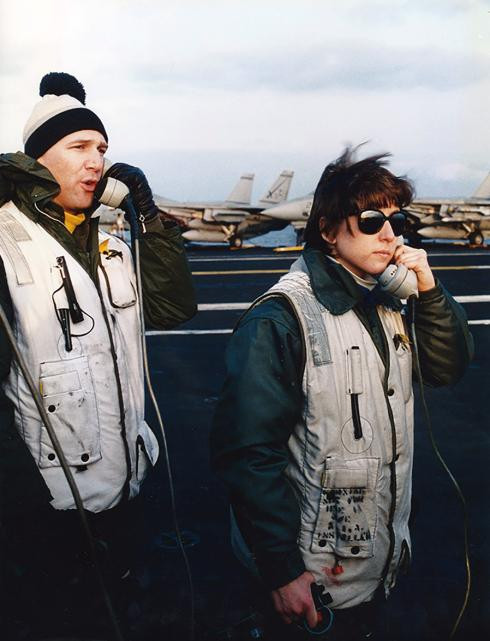 A man and a woman stand on the flight deck of a U.S. Navy aircraft carrier during daylight. Both are wearing white vests and both are speaking on telephones. The wind on the flight deck blows their hair.
A man and a woman stand on the flight deck of a U.S. Navy aircraft carrier during daylight. Both are wearing white vests and both are speaking on telephones. The wind on the flight deck blows their hair.
Some women pilots may experience isolation due to being a minority in their units. Creating a supportive and inclusive environment can help women feel more connected and valued.
The demands of a military career can take a toll on mental health. The Air Force provides mental health resources and support for all pilots, including women.
Some women pilots may face resistance or skepticism from those who question their abilities. Proving their competence and dedication can help overcome these perceptions.
Addressing these challenges requires ongoing efforts to promote diversity, inclusion, and equity in the Air Force. By creating a more supportive and inclusive environment, the Air Force can attract and retain talented women pilots.
6. What Opportunities Are Available For Women After Their Service In The Air Force?
After serving in the Air Force, women pilots have access to a wide range of opportunities in both aviation and other fields. The skills, experience, and leadership qualities they develop during their service are highly valued by employers.
Many women pilots transition to commercial aviation, flying for major airlines or cargo carriers. The demand for pilots is high, and airlines actively recruit veterans with military flight experience.
Some women pilots become flight instructors, teaching others how to fly at civilian flight schools or universities with aviation programs. Sharing their knowledge and experience is a rewarding career path.
Women pilots can work in corporate aviation, flying private jets for businesses or individuals. This offers a different type of flying experience with a focus on customer service.
 Four U.S. Navy personnel–two women, one man and one person obscured by a map, all in uniform–stand on the deck of an aircraft carrier. The woman on the far left has her hands raised in the air.
Four U.S. Navy personnel–two women, one man and one person obscured by a map, all in uniform–stand on the deck of an aircraft carrier. The woman on the far left has her hands raised in the air.
Women pilots can pursue careers in aviation management, working for airports, airlines, or government agencies. These roles involve planning, organizing, and directing aviation operations.
Some women pilots transition to careers in the aerospace industry, working for companies that design, manufacture, and maintain aircraft and spacecraft.
Women pilots can work as aviation safety inspectors for the FAA, ensuring that airlines and other aviation operators comply with safety regulations.
The leadership skills and experience gained in the Air Force are transferable to a variety of business and management roles. Women pilots can excel in these positions.
Women pilots can use their GI Bill benefits to pursue further education, earning advanced degrees in aviation, business, or other fields.
7. What Are The Benefits Of Having Women As Pilots In The Air Force?
Having women as pilots in the Air Force brings numerous benefits, enhancing the capabilities and effectiveness of the military. Their inclusion promotes diversity, improves performance, and strengthens the Air Force as a whole.
Integrating women pilots increases diversity within the Air Force, bringing different perspectives and experiences to the table. This diversity can lead to better decision-making and problem-solving.
Studies have shown that diverse teams perform better than homogeneous teams. Women pilots bring unique skills and approaches that can improve team dynamics and overall performance.
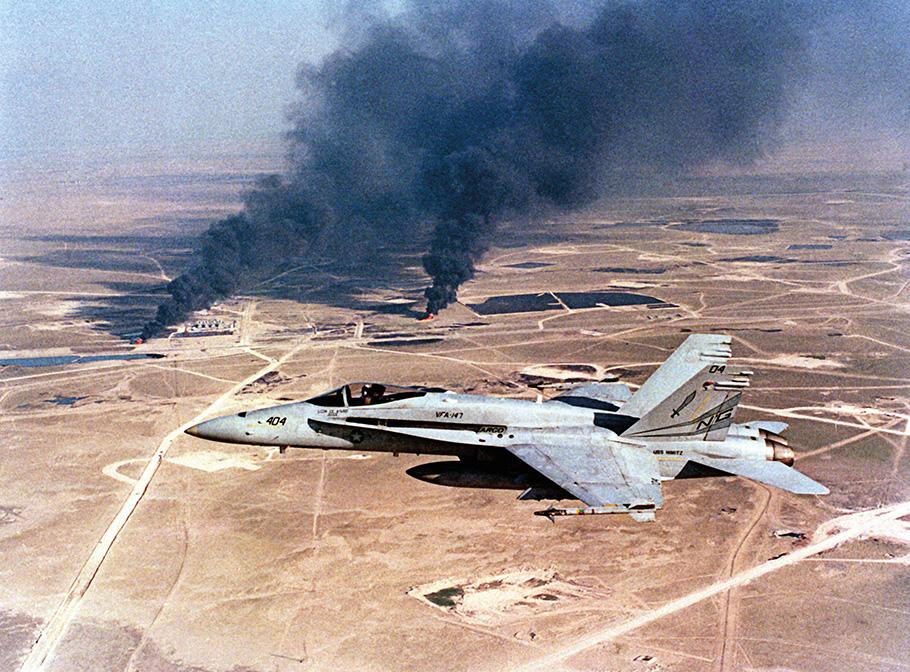 A silvery gray military jet armed with air-to-air missiles flys over a desert, as twin plumes of thick black smoke rise into the air.
A silvery gray military jet armed with air-to-air missiles flys over a desert, as twin plumes of thick black smoke rise into the air.
Allowing women to serve as pilots expands the talent pool, ensuring that the Air Force can recruit the best and brightest individuals, regardless of gender.
Women pilots serve as role models for young girls and women, inspiring them to pursue careers in aviation and other STEM fields. This can help address the gender gap in these industries.
Including women in combat roles sends a powerful message about gender equality, both at home and abroad. This can enhance the Air Force’s reputation and promote positive social change.
Women pilots bring a high level of professionalism and dedication to their work, contributing to the overall effectiveness of the Air Force.
Integrating women into all roles helps to create a more inclusive and respectful environment within the Air Force.
8. How Has The Role Of Women In The Air Force Changed Over Time?
The role of women in the Air Force has undergone significant transformation over time, reflecting broader societal changes and evolving military needs. From limited support roles to flying combat missions, women have steadily expanded their presence and influence within the Air Force.
Initially, women were limited to non-combat roles, primarily serving in administrative, medical, and support positions. The Women’s Auxiliary Ferrying Squadron (WAFS) and Women Airforce Service Pilots (WASP) played a crucial role during World War II, but their contributions were not fully recognized at the time.
The Women’s Armed Services Integration Act of 1948 allowed women to serve as permanent members of the military, but the “combat exclusion law” restricted their roles. This law limited women’s opportunities for advancement and leadership positions.
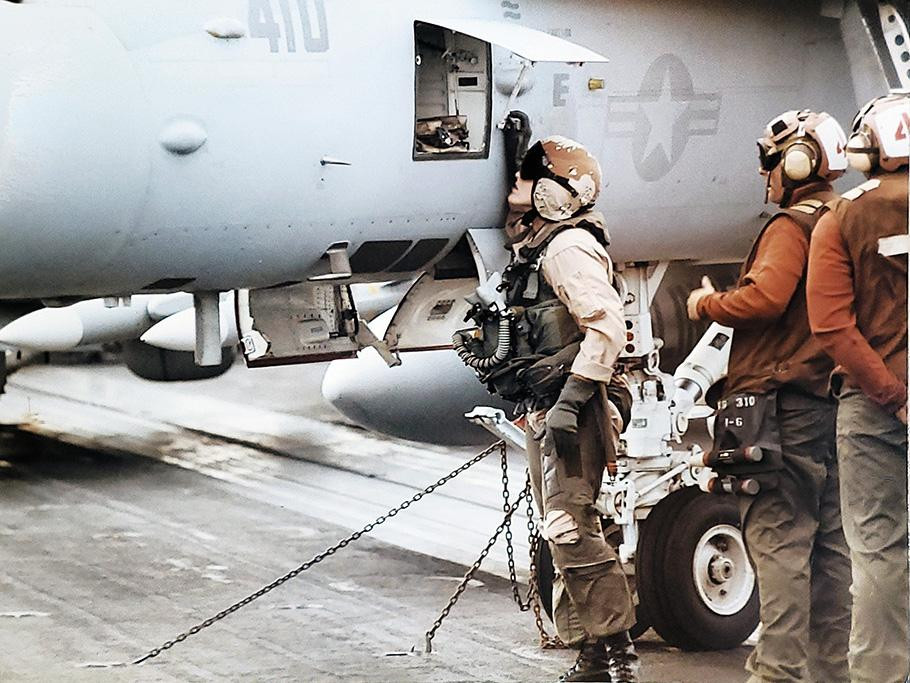 A young woman wearing a U.S. Navy olive-green flightsuit, helmet, goggles, and gloves peers into an open compartment on the side of a gray military jet with U.S. Navy markings.
A young woman wearing a U.S. Navy olive-green flightsuit, helmet, goggles, and gloves peers into an open compartment on the side of a gray military jet with U.S. Navy markings.
The end of the draft in 1973 led to increased efforts to recruit women into the military. The Air Force began offering more opportunities for women in non-combat roles, including aviation support positions.
The Gulf War in 1991 highlighted the contributions of women in various roles, including aviation. Women flew transport aircraft, helicopters, and electronic warfare planes, often in dangerous conditions.
In 1993, the combat exclusion policy was lifted, allowing women to serve in combat roles, including as pilots. This opened new career paths and opportunities for women in the Air Force.
Today, women serve in a wide range of roles in the Air Force, including fighter pilots, bomber pilots, and commanders. They are fully integrated into all aspects of military operations.
The Air Force is committed to promoting diversity and inclusion, creating a more equitable and supportive environment for women.
9. What Are Some Notable Achievements Of Women Pilots In The Air Force?
Women pilots in the Air Force have achieved numerous milestones, demonstrating their skill, dedication, and leadership. Their accomplishments have paved the way for future generations of women in aviation.
Kimberly “Face” Dyson was the first American woman to fly a combat mission for the United States in 1994, marking a significant moment in military history.
Colonel Martha McSally became the first woman to fly combat missions for the U.S. Air Force in 1995 during Operation Southern Watch, breaking barriers and inspiring others.
Jeannie Leavitt became the Air Force’s first female fighter pilot in 1993, paving the way for women to fly fighter jets.
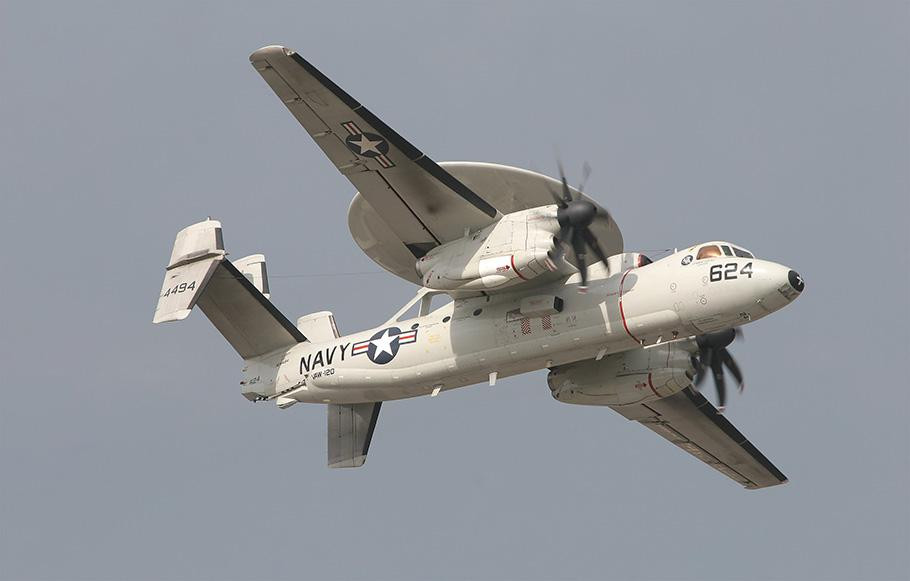 A white, twin-turboprop airplane flies against a gray sky during daylight. The airplane has U.S. Navy markings.
A white, twin-turboprop airplane flies against a gray sky during daylight. The airplane has U.S. Navy markings.
Heather Pringle became the first female pilot in the Air Force to pilot the C-5 Galaxy, one of the world’s largest aircrafts, responsible for transporting cargo.
Abigail “Kobe” Klink was the first woman to command an F-35A Lightning II fighter squadron.
Jacqueline Van Ovost became the first female four-star general in the Air Force in 2021, reaching the highest rank in the military.
These achievements highlight the significant contributions of women pilots in the Air Force and their impact on military aviation.
10. Where Can I Find More Information About Women In The Air Force And Aviation?
For more information about women in the Air Force and aviation, several resources offer valuable insights and updates. These resources include official Air Force websites, aviation organizations, and educational institutions.
The official Air Force website provides comprehensive information about career opportunities, training programs, and current events. It also features news articles and profiles of Air Force personnel.
- Website: www.af.mil
The Air Force Historical Research Agency offers historical documents, photos, and research materials related to the history of women in the Air Force.
- Website: https://www.afhra.af.mil/
Women in Aviation International (WAI) is a non-profit organization dedicated to the advancement of women in all areas of aviation. WAI offers scholarships, networking opportunities, and educational resources.
- Website: www.wai.org
The Ninety-Nines, Inc. is an international organization of licensed women pilots that promotes aviation and provides scholarships and support for women pilots.
- Website: www.ninety-nines.org
Embry-Riddle Aeronautical University is a leading institution for aviation education, offering degree programs and research opportunities related to women in aviation.
- Website: www.erau.edu
- Address: 600 S Clyde Morris Blvd, Daytona Beach, FL 32114, United States
- Phone: +1 (386) 226-6000
Flyermedia.net provides articles, news, and resources related to aviation, including stories about women in the Air Force.
- Website: flyermedia.net
These resources offer a wealth of information for anyone interested in learning more about the role and achievements of women in the Air Force and aviation.
FAQ Section
1. Can women fly fighter jets in the Air Force?
Yes, women can and do fly fighter jets in the Air Force. They operate various high-performance aircraft, including the F-35 Lightning II and F-16 Fighting Falcon.
2. What are the age requirements for women to become pilots in the Air Force?
Applicants must generally be between 18 and 30 years old. Waivers may be considered on a case-by-case basis, according to Air Force regulations.
3. Do women pilots receive the same training as men in the Air Force?
Yes, women pilots receive the same rigorous training as their male counterparts, covering academic instruction, simulator sessions, and extensive flight experience.
4. Are there any physical fitness requirements for women to become pilots?
Yes, candidates must meet specific physical fitness standards, including strength, endurance, and agility, as evaluated through performance-based tasks.
5. What types of degrees are recommended for aspiring women pilots?
A bachelor’s degree in a STEM field (science, technology, engineering, and mathematics) is highly recommended, providing a solid foundation for aviation principles.
6. What is the Air Force Officer Qualifying Test (AFOQT)?
The AFOQT is a standardized test assessing verbal, quantitative, and aviation knowledge, essential for evaluating pilot candidates’ skills.
7. What is the combat exclusion policy, and how did it affect women in aviation?
The combat exclusion policy restricted women from combat roles, limiting their opportunities in aviation until its removal in 1993.
8. How has the integration of women impacted the Air Force?
The integration of women has enhanced diversity, improved team performance, and expanded the talent pool, strengthening the Air Force overall.
9. What resources are available for women seeking careers in aviation?
Organizations like Women in Aviation International (WAI) and The Ninety-Nines offer scholarships, networking, and educational resources.
10. Can I find stories about women in the Air Force on flyermedia.net?
Yes, flyermedia.net provides articles, news, and resources related to aviation, including inspiring stories about women in the Air Force.
Ready to learn more and explore your potential in aviation? Visit flyermedia.net today to discover comprehensive resources, inspiring stories, and exciting career opportunities in the Air Force and beyond. Start your journey towards the skies now!